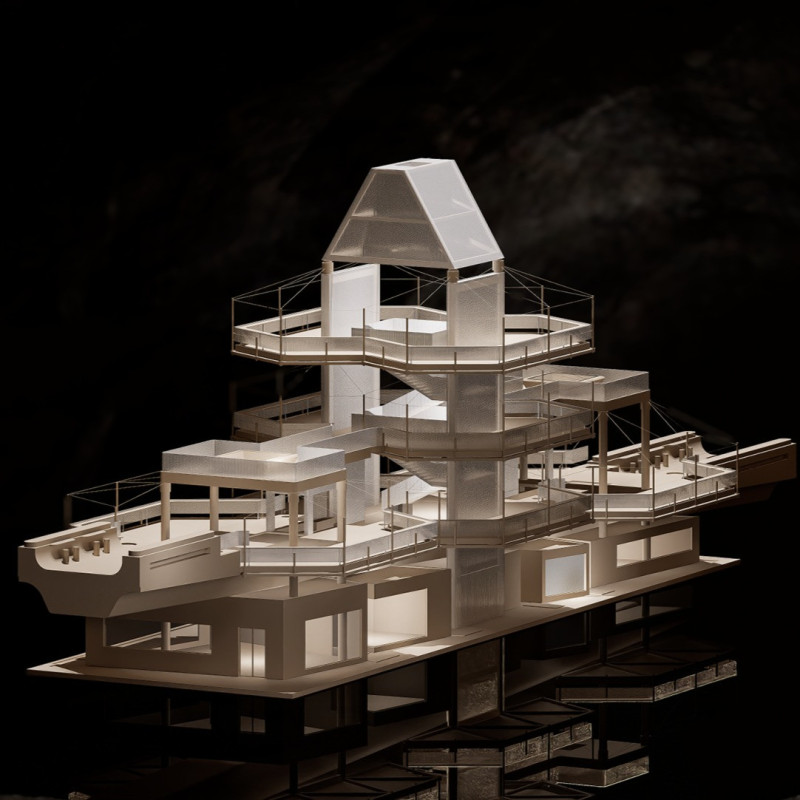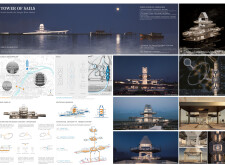5 key facts about this project
## Project Overview
Located adjacent to the Yangtze River Harbor, the Tower of Sails is a contemporary architectural endeavor that integrates cultural, environmental, and functional elements. The design aims to address both urban dynamics and natural landscape, reflecting the historical significance of the area while creating a modern space for community engagement.
## Spatial Strategy
The design concept, themed "The Spirit of Water," provides a framework for interaction between visitors and the riverside. Central to the project is the Sail Tower, which draws inspiration from maritime forms, creating a structure that acts as both a visual landmark and a functional hub. The Bridge Tower structure enhances vertical connectivity, promoting a dynamic experience as visitors navigate through interconnected spaces. Careful attention to spatial flow mirrors the natural movement of the river, facilitating an intuitive journey through various levels and functions.
## Materiality and Sustainability
The project employs a selection of innovative materials optimized for both aesthetic impact and structural durability. Concrete serves as the primary structural component, enabling complex geometric forms, while extensive use of glass ensures transparency, enriching natural light and visual continuity. A steel framework provides strength and flexibility, particularly in cantilevered sections, while timber elements introduce warmth in leisure spaces. To emphasize sustainability, features such as solar panels and rainwater collection systems are integrated, aligning with contemporary ecological practices.
## Public Interfaces and Environmental Integration
Viewing platforms are strategically positioned to offer panoramic vistas of the river and surrounding landscapes, enhancing the connection between architecture and nature. A rooftop garden provides a green retreat within the urban environment, contributing to biodiversity and public enjoyment. Spaces designated for community gatherings and exhibitions promote social interaction, while design motifs reminiscent of local cultural symbols encourage a dialogue between the structure and its historical context. The Bridge Tower concept facilitates visibility and accessibility, bridging indoor and outdoor spaces to engage visitors with the landscape actively.



















































